Russell Bishop: 'Cowardly' killer's decades of lies
- Published
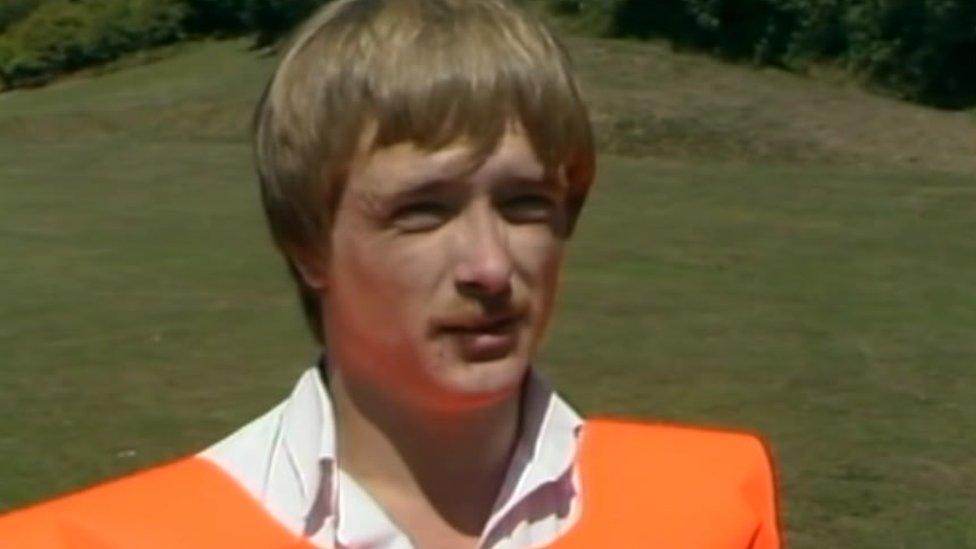
After his acquittal, Bishop said he wanted the "real" killer found
Russell Bishop's lies started even before his victims' bodies were found, when he turned out to help search for the two little girls he had killed. His deceit continued for decades, until a change in the law and advances in science led to his conviction for their murder.
Bishop was among the first on the scene when Nicola Fellows and Karen Hadaway - later known as the Babes in the Wood - were found dead in a woodland den in Wild Park, near Brighton's Moulsecoomb Estate, in October 1986. They had been strangled and sexually assaulted.
The roofer went on to protest his innocence following his arrest and during the 1987 trial, from which he walked away a free man.
Police still remember how he became a "cause celebre", fighting for "justice" for the schoolgirls after his acquittal.
But within three years, he had kidnapped and sexually assaulted a seven-year-old girl and left her for dead at Devil's Dyke on the South Downs.
Former detective inspector Malcolm Bacon said Bishop had by then become a well-known figure in Brighton.
"He was walking round, fronting marches, trying to find out who the 'real person' was who had killed the girls."
But he said: "It was pretty obvious at that particular time that he was responsible."
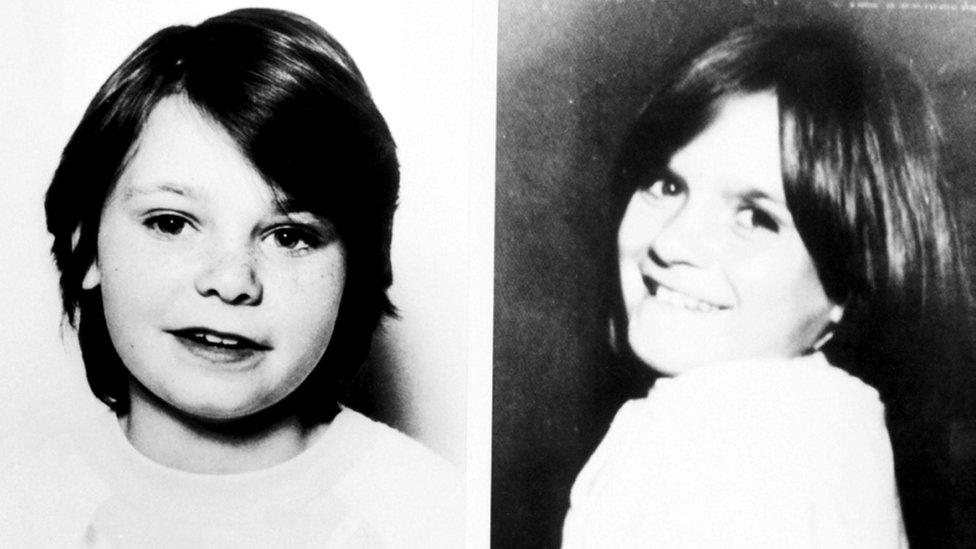
Karen Hadaway (left) and Nicola Fellows went missing after they went out to play
Mr Bacon said the 1987 acquittal directly led to the Devil's Dyke attack.
"We didn't get the conviction, which is what should have happened. And it was as a result of not getting that conviction that the horrible events of February 1990 were allowed to occur," he said.
The girl was snatched from the street, shut in a car boot and driven to the beauty spot, where she was molested, strangled and thrown into a gorse bush, apparently lifeless - but she survived.
Barely able to stand, she managed to fight her way out of the thorns. Her rescuers spotted her by the roadside, naked, freezing cold and terrified, with her skin badly shredded by the gorse.
This time, Bishop would not get away with his crimes. The girl was able to identify him as her attacker and he has been in prison ever since.
It was after the 1990 attack that Phil Mills, then a crime reporter from the Brighton Argus, wrote to Bishop in jail to ask him if he had killed Karen and Nicola.
Bishop chose not to answer the question.
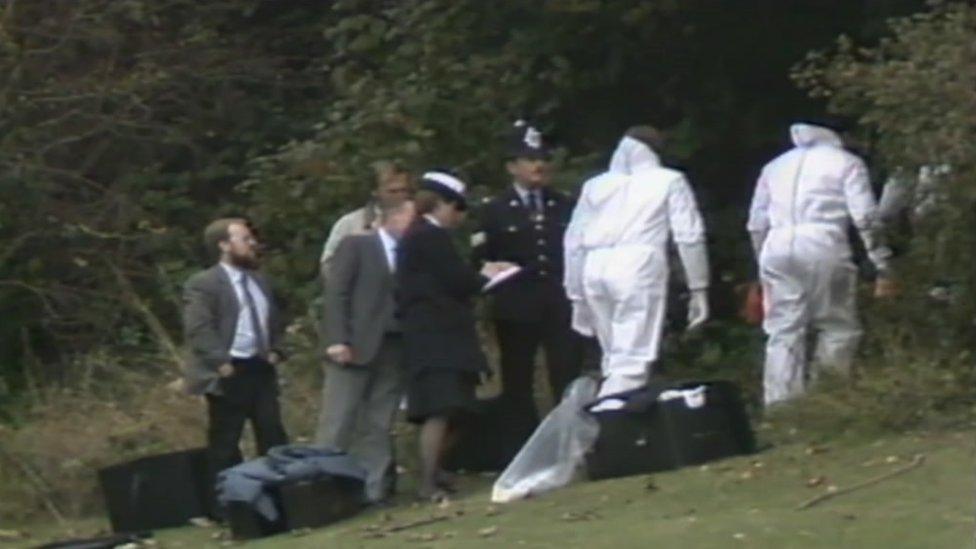
The girls were found in a woodland den in Wild Park
Instead, he sent back an account of his life in a top-security prison describing his own ordeal.
Three decades on, Mr Mills says the letter shows Bishop trying to portray himself as a victim, a scapegoat, as someone deserving of sympathy.

Bishop wrote a letter describing his life in jail
Bishop wrote of his misery, his fear and his despair and how his own children were helping to keep his spirits up - but it was an account that led to outrage in the community when it was published.
In it, he described how he constantly had to watch his back, for fear of violence in prison.
He wrote that at times he felt he couldn't go on and there was always a way out of jail "in a box or a bag".
And he said: "I can't even go back to Sussex. It is a very hostile world now. At the end of all of this I can never be happy."
Mr Mills remembers the paper was hoping he would confess.
"We were hoping Bishop would have some modicum of pity for the families and, now that he was convicted and jailed for a similar offence, he would confess to the Babes' murders.
"It didn't happen and we were left with his comments on life in prison and, quite rightly, some members of the public objected to the story, arguing why should this killer be given the oxygen of publicity that could generate some sympathy for him.
"I understood their point of view as soon as the complaints rolled in."

The Devil's Dyke victim also wrote a letter to say she had recovered
In contrast, the seven-year-old girl he attacked also wrote to the paper in 1990, but she used her letter to describe her recovery and send a "thank you" to her friends.
The girl, who remained anonymous, wrote: "I am feeling very well now and all my scratches have gone. I am having a lovely Christmas and I would like to wish you a Merry Christmas from ?"
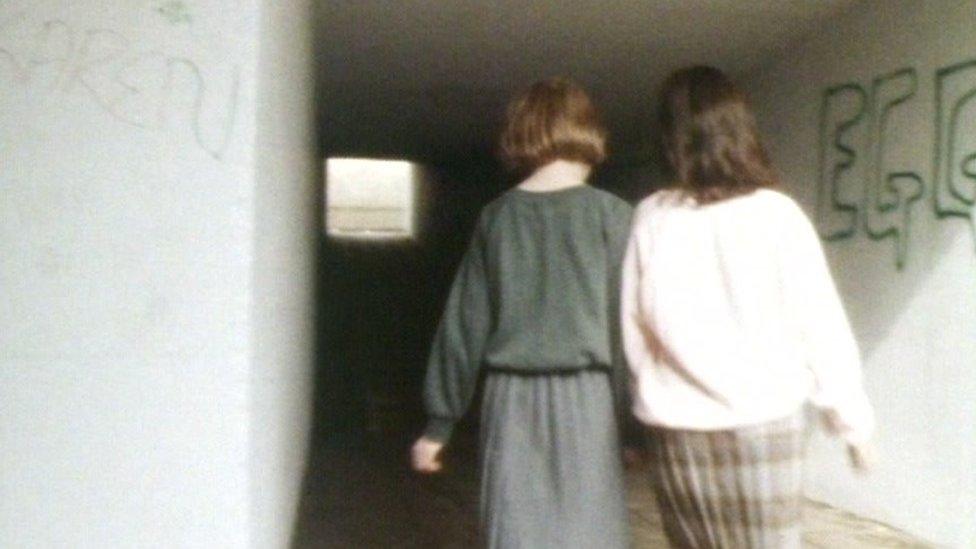
Crimewatch showed a reconstruction in the hunt for the girls' killer
During the second murder trial, Bishop said he was a victim of police brutality, claiming officers had bullied him into making a false statement, "totally destroying" him.
He also told jurors his history of wrongful arrests included being held over Brighton's Grand Hotel IRA bombing in 1984.
Bishop claimed that officers called him a "liar", that they had been "downright nasty", that he was "kept a prisoner".
And he said in court: "I was having two police officers bullying and totally destroying me in that room. I'm dyslexic and I could not read or write. I had poor problem-solving skills."
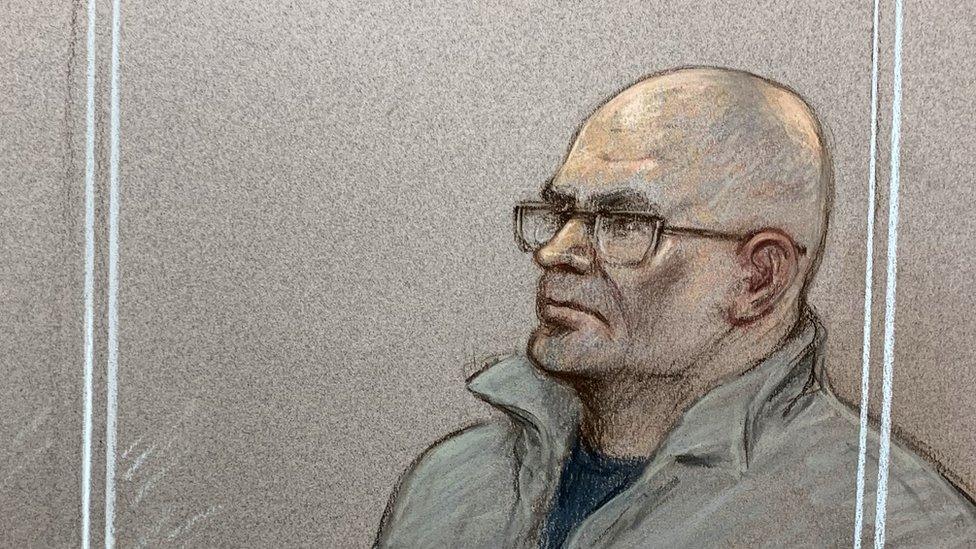
Russell Bishop faced a second trial at the Old Bailey after his acquittal was quashed
Bishop also told jurors he nearly threw himself and his two children off Beachy Head after the first trial, after he'd had numerous bricks thrown through his windows and firebombs through his letterbox.
But prosecutor Brian Altman QC said Bishop had set out to create a "smokescreen" and that, in reality, he had killed Nicola and Karen for his own sexual gratification.
After Bishop chose to give evidence but not to return during cross-examination, Mr Altman told the Old Bailey jury he was a coward.
"You may conclude he showed you his true colours - an abusive, aggressive, controlling man," Mr Altman said.
"He is a coward to refuse to continue his evidence before you and he is a cowardly paedophile who thinks nothing of attacking a seven-year-old child."
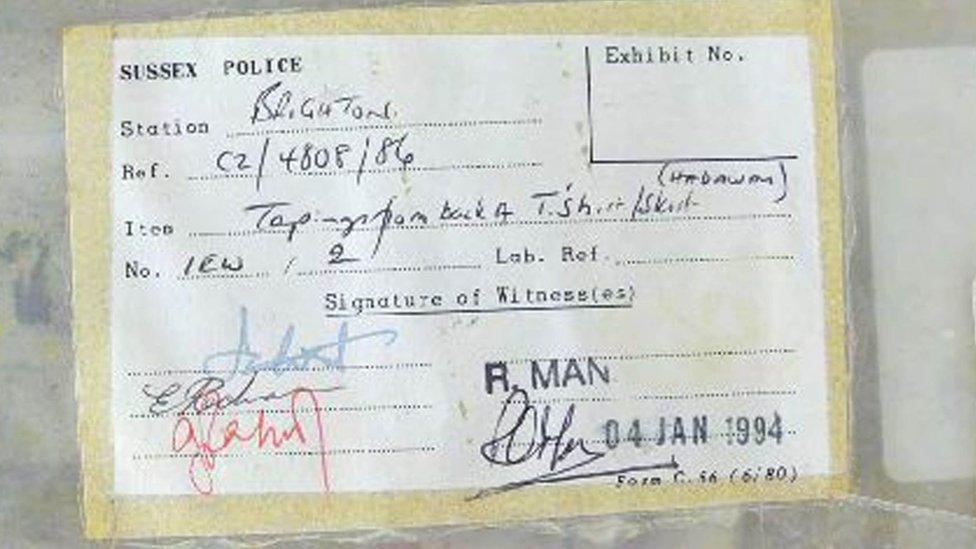
New DNA tests of samples taken in 1986 allowed police to take the case forward
Close to tears Barrie Fellows, Nicola's father, took the stand in the second murder trial after the defence made allegations against him.
The girls' mothers, Susan Fellows - now Eismann - and Michelle Hadaway also gave evidence during the trial.
Karen's father Lee Hadaway, died in 1998 from a heart attack.
Court papers showed that in the first murder trial, Mr Justice Schiemann directed jurors to acquit Bishop if they were unsure of any one of three statements - that the girls were dead by 18:30; that Bishop had worn a Pinto sweatshirt on the night they went missing; and that the Pinto sweatshirt was worn by the murderer.
In the second trial, the prosecution said DNA science not available in 1987 had linked the sweatshirt with Bishop and the girls, and also samples taken from Karen's arm produced a one-in-a-billion DNA match to Bishop.

Jurors visited Wild Park and saw a memorial to the girls during the trial
Mr Mills still remembers seeing Mrs Hadaway "frantic with worry" before her daughter's body was found.
"I remember her not being able to stand still, sit still for more than a couple of seconds; she was up, out of the house, looking down the road, looking round the corner, hoping and waiting that her daughter would turn the corner and run into her arms," he said.
He said while he welcomed the conviction and was pleased for the family, he did not believe it would bring them closure.
"I think it brings them a sense of peace and a sense of justice," he said. "But how do you ever get over the loss of your daughter?
"That lives with you every day."
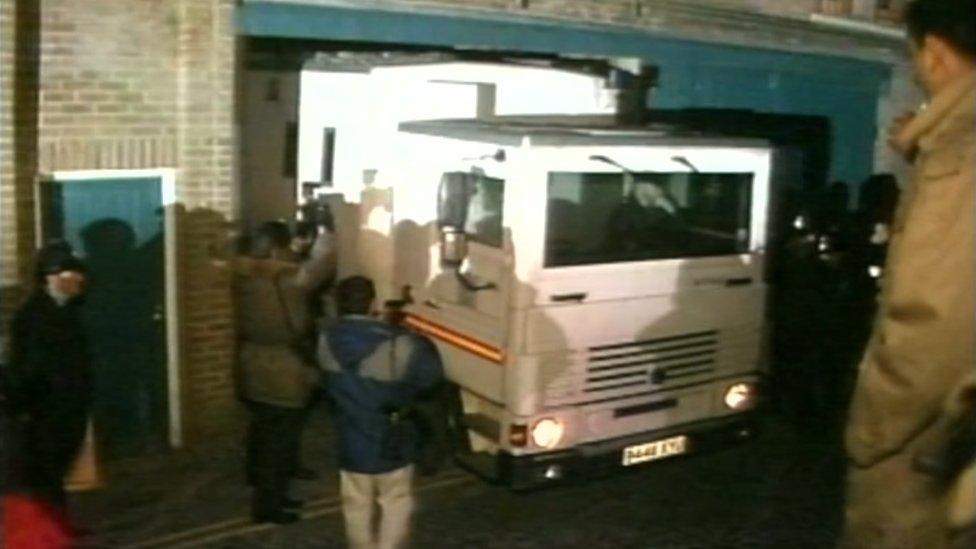
Bishop was jailed in December 1990 for the Devil's Dyke attack
- Published4 December 2018

- Published28 November 2018

- Published26 November 2018
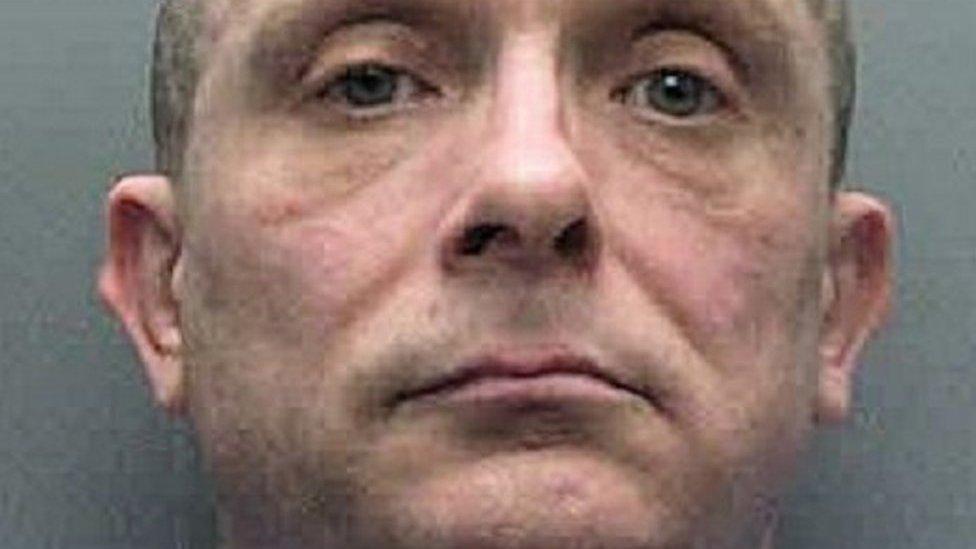
- Published23 November 2018

- Published21 November 2018
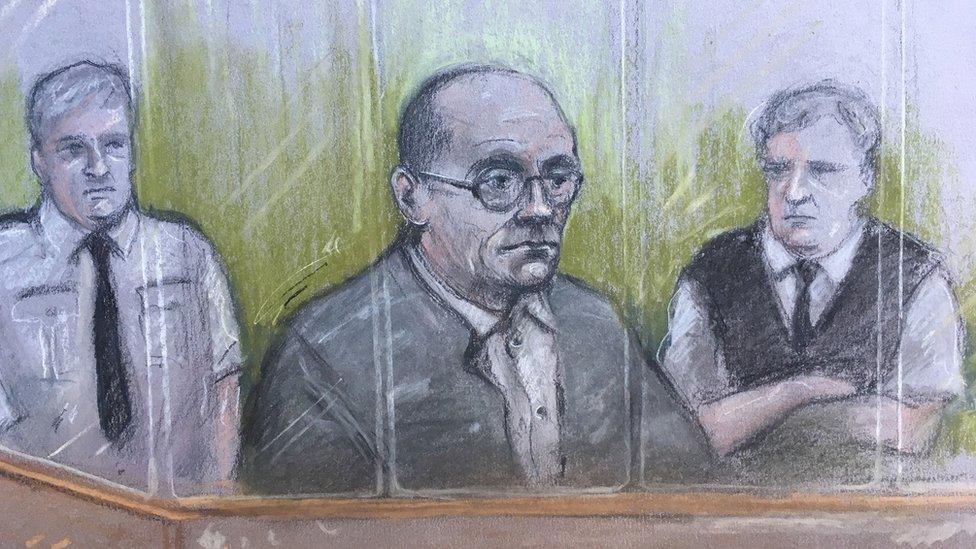
- Published7 November 2018

- Published17 October 2018

- Published8 November 2018
